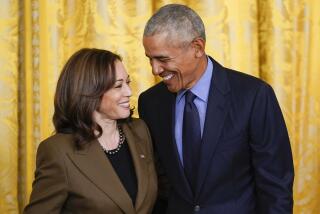Inside Kamala Harris’ bumpy ride from near political doom to a rebound that has Democrats hopeful
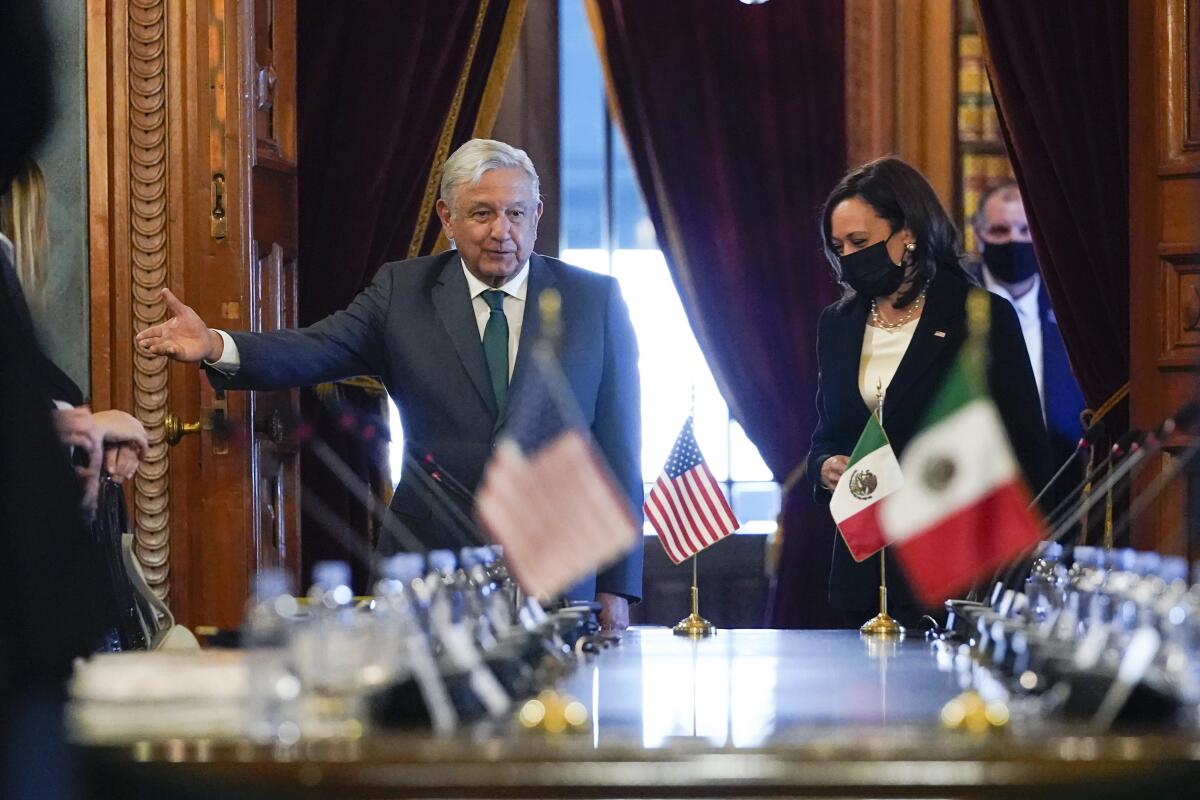
- Share via
WASHINGTON — Vice President Kamala Harris looked peeved and exhausted from the weight of expectations as she stood at a hotel meeting room three years ago, flags and a foggy Mexico City skyline behind her.
She gestured dutifully and gazed at her notes as she recited Biden administration talking points about “the capacity of people” and “the interconnection between the United States and Mexico when it comes to our economies.”
The two-day mission had the normal and fairly boring trappings of a vice presidential trip — meet-and-greets with leaders of Guatemala and Mexico, a tour of female engineering projects at a university, some modest pacts and promises.
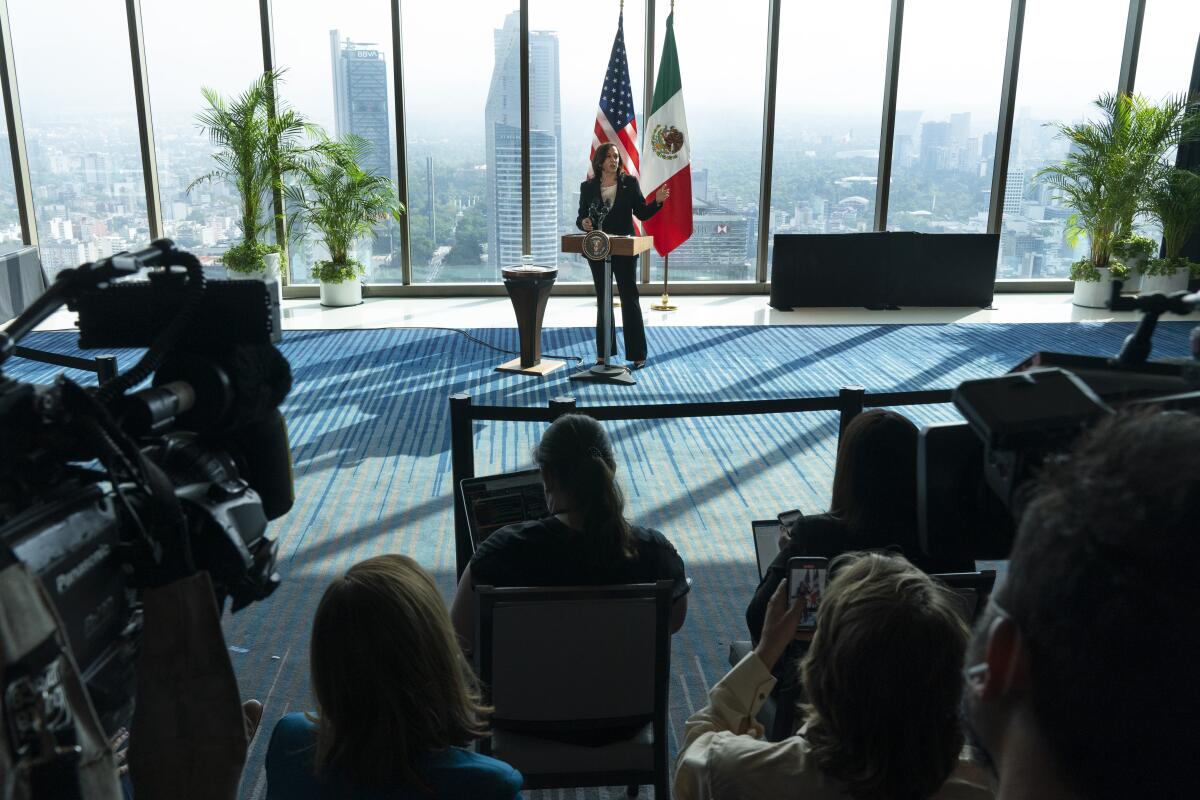
“Do I declare this trip a success? Yes, I do,” Harris said from the lectern, not entirely convincingly. “It is a success, in terms of the pathway that is about progress. We have been successful in making progress.”
In Washington, her awkward comments a day earlier about the border and her admonitions to migrants to stay home were sparking a conflagration that riled her allies, validated her detractors and established her reputation for everyone in between.
“It’s blowing up,” her communications director at the time, Ashley Etienne, recalled thinking, as she went into crisis-control mode in Washington.
It would take three years, and a pair of unlikely historic national events — the overturning of a national right to abortion and President Biden’s late withdrawal from his reelection campaign — to convince Democrats that Harris had the political skills to compete for the presidency.
Her allies say Harris has grown politically in the meantime, taken advantage of circumstances that played to her strengths and reestablished herself as the political talent that launched a swift rise through California politics and nationally elected office after just four years in the Senate.
But as vice president, she has had only a handful of opportunities to make an impression. And many voters still don’t know her or what she does, according to polls and focus groups.
“She may be battle-scarred, but she’s also battle-tested,” said Donna Brazile, an ally who led Vice President Al Gore’s unsuccessful 2000 presidential campaign and is now making the case that Harris is ready to win the presidency in November.
The border ‘crisis,’ and a ‘trash’ portfolio
The trip to Guatemala and Mexico was Harris’ first abroad as vice president, on her most high-profile assignment — curbing migration from Central America. Reporters clamored for space on Air Force Two to watch history as Harris — the first Black woman and the first Asian American woman to hold nationally elected office — represented her country on foreign soil.
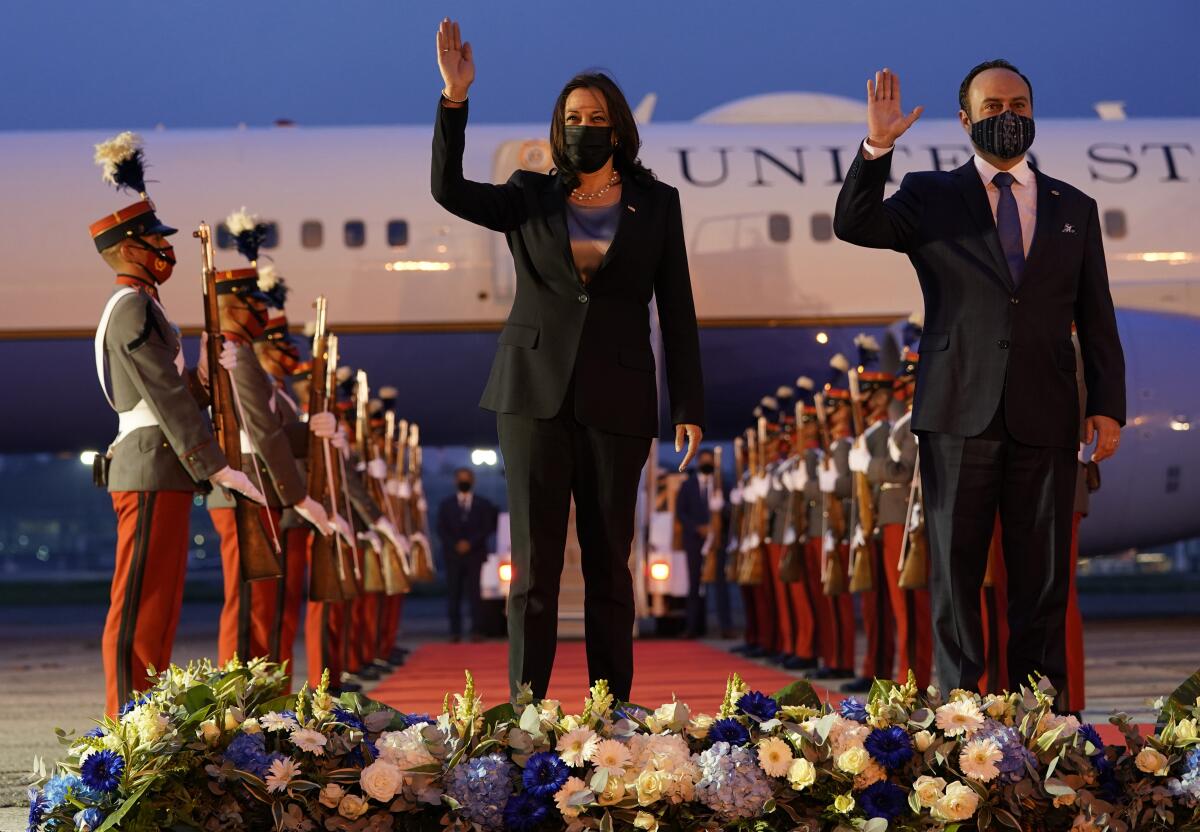
They were also following a big story. Immigration arrests near the U.S.-Mexico border were skyrocketing, and Republicans were labeling it a crisis while calling Harris the “border czar,” a title she did not hold or want, and demanding she travel to the border to see it herself. Biden had given her the assignment weeks earlier to improve conditions in Central American countries, mitigating the “root causes” of migration, because he had attempted the same strategy when he was vice president.
Her allies seethed, seeing it as a political loser, part of what Bakari Sellers, who co-chaired her 2020 presidential primary campaign, called “a trash” portfolio. She would go on to define the job narrowly, staying away from congressional negotiations over immigration changes or administration policies on border practices.
Lester Holt of NBC News won the battle for a sit-down interview in Guatemala and pressed Harris on whether she would visit the border as Republicans were demanding. She laughed off the question and dismissed it, saying she hadn’t been to Europe either. The same day, she angered the left by standing in Guatemala’s National Palace and warning would-be migrants: “Do not come,” something other administration officials had said but with much less weight or fanfare.
By the time she left Mexico a day later, whatever ceremonial merit the trip may have had abroad was overshadowed by domestic memes, mockery and frustration.
Harris’ allies blamed Biden’s aides for failing to prepare her and setting her on a politically precarious path. Other Democrats began to worry that Harris, whose 2020 presidential primary bid was marked by missteps, lack of cogent policy agenda and internal fighting, had maxed out her political skills.
“I don’t know what the strategy is relative to her, but I wouldn’t say she’s had a lot of opportunities to really stand out,” David Axelrod, former President Obama’s lead strategist, said in an interview with The Times soon after the trip.
“God willing, [Biden] will be in astonishing condition, in good health, in 2024,” he continued. But “there’s a non-trivial chance that the vice president is going to get thrust into leadership. Having elevated her into this position, I think they probably have some investment in her success and responsibility to help elevate her.”
Awkward moments, new team: ‘It was brutal’
The coming months were marked by more bad coverage of staff turnover, which became increasingly routine. Harris withdrew, reducing media appearances as her aides and allies leaned on members of Congress to go on television to change the narrative.
Her influence inside the White House appeared marginal compared with Biden’s team of longtime advisors. Biden, who promised a weekly lunch as a sign she would have unique access, met with her every other week in the first year and then sparingly in the first half of 2022.
The image that took hold, especially in conservative media, was of her most awkward moments, when she used stilted language and spoke in the passive voice.
Behind the scenes, staffers were dealing with the fallout from COVID-19. The White House had restrictions that limited their interaction in the early months. Most did not know one another or Harris, who brought only a handful of aides when she joined Biden’s team, which included top advisors who had known him for decades. Their early interactions included masks and Zoom meetings, with fewer opportunities to travel the country.
“We were all very new to each other. We were new to [Harris], and we were not in the same room,” Etienne recalled. “It was brutal.”
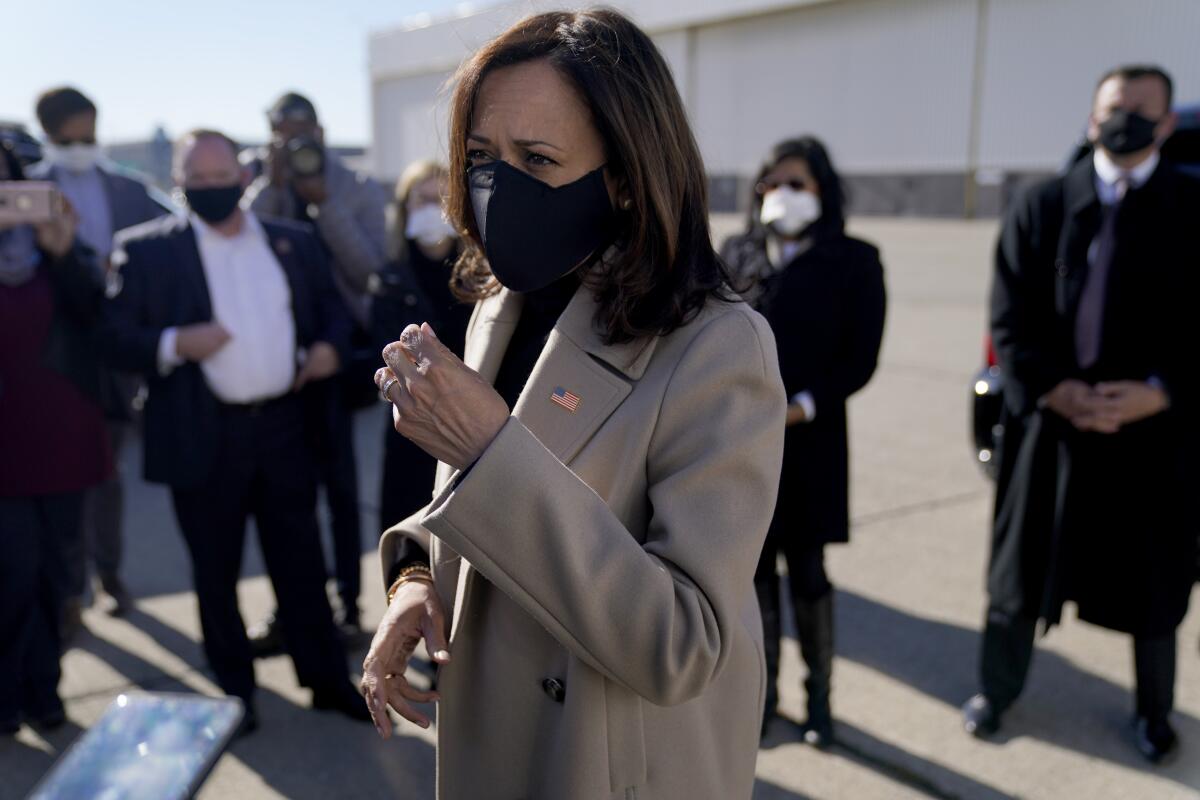
Added to that was the stress of a White House job, with global consequences and the pressure to make the first woman of color in national office succeed. Etienne, raising a 6-year-old daughter and caring for a father who was losing his sight, left after a year.
A lot of it felt unfair to Harris and her allies. Harris, 59, was doing things that had never been done, they argued: adding issues such as women’s maternal health to the administration’s agenda, bringing vital Black cultural institutions that had been shut out from mainstream history into the White House and building a roster of grassroots contacts at the state level.
She’s “held to a standard that many other politicians have not been held” to, said Brian Brokaw, a California consultant who had worked on several of Harris’ campaigns. “As a result, I don’t think the voters always get to see Kamala being Kamala.”
Behind the scenes, Harris liked to curse and make sarcastic jokes. But in public, she appeared cautious and tentative.
The conversation around her public image has long vexed allies, who also worried that people were overthinking it.
“People who have tried to curate a certain type of Kamala Harris are doing her a disservice,” said Rep. Jared Huffman, a San Rafael Democrat who has known Harris since she was San Francisco district attorney. “Her strength is her authenticity.”
Allies and advisors pointed out that no one ever tracked Vice President Mike Pence’s poll numbers or cared much about his laugh. But the media tracked Harris’ approval numbers, which were bad, even worse than Biden’s through most of their time together.
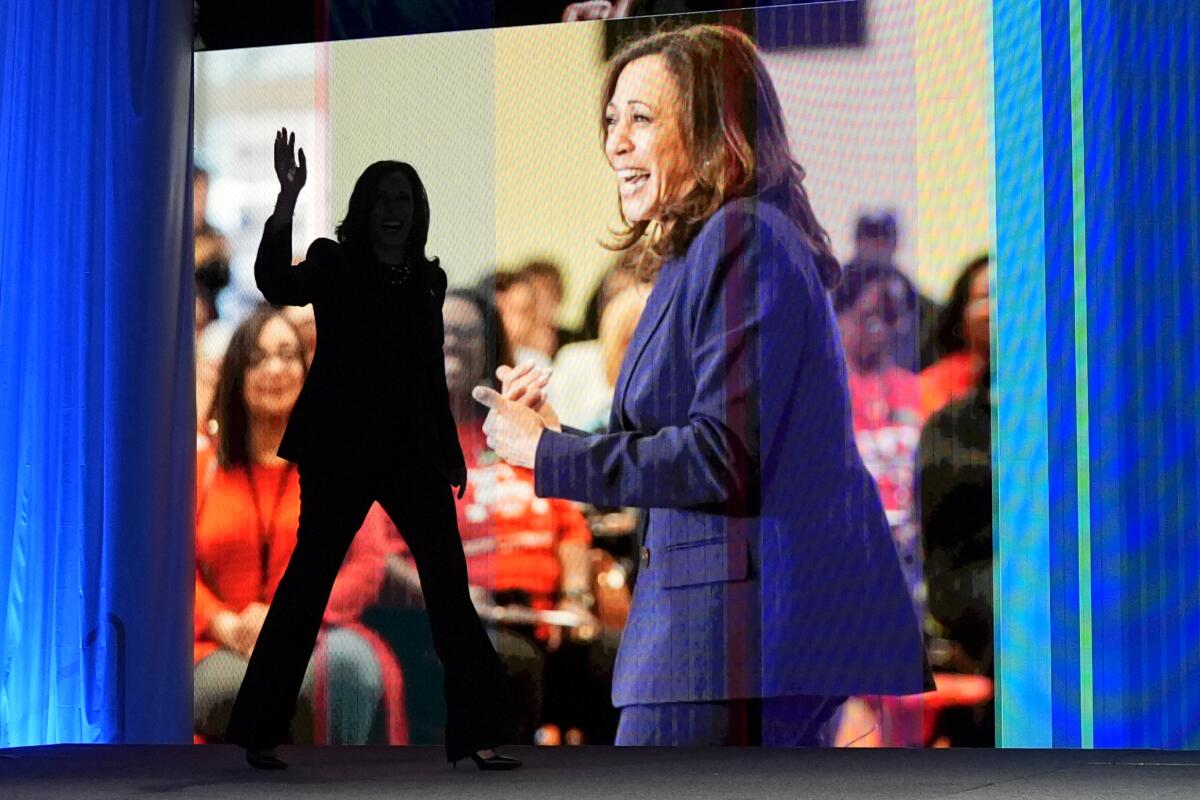
To some confidants, it was an unwinnable situation. More so than other vice presidents, she was conscious of the need to show loyalty to her boss, with whom she had had a sometimes bitter contest in the 2020 primary and whose age invited constant speculation that he would retire after his first term.
“When people would say, ‘What is she doing?’ — some of those questions they never asked of other vice presidents,” said Karen Finney, a longtime media aide to Hillary Clinton and a close Harris ally.
But it was also an opportunity, Finney added, one they could leverage: “At times there was not the understanding that that curiosity was out of excitement.”
And while Harris went to many meetings with Biden, called lawmakers to rally support and joined him at bill-signing ceremonies, there was little evidence she was leading the effort to negotiate with Capitol Hill lawmakers as the administration passed a series of legacy-building spending bills.
Most modern vice presidents came into office with more government experience than their bosses. Pence, who had been a governor and congressman, was a regular at Senate Republican policy lunches and helped build former President Trump’s staff, though he eventually lost clout as Trump became more eager to deal with Congress himself.
Biden had not only been vice president, but also served in the Senate for four decades and relished the bipartisan backslapping of an earlier era, convinced he could rekindle it.
“Biden has more experience than Thomas Jefferson,” said Sellers, Harris’ former campaign official. “There ain’t a whole lot more you can add, in terms of legislative capability.”
After abortion ruling, ‘they finally unleashed her’
Sellers and others argued that she could do more outside Washington, reaching core Democratic groups that would be vital to holding the White House.
She began taking on bigger roles representing Biden on the foreign stage — sewing up the relationship with France after a perceived Biden slight, heading to Poland as the Russian invasion of Ukraine broke out, meeting with allies in Asia amid heightened tensions with China, taking Biden’s place at the Munich Security Conference.
She also began taking on domestic roles better suited to her strength as a former prosecutor.
The first one, fighting off Republican attempts to change state voting rules, began before her Guatemala trip and did not garner legislative success. But unlike with the immigration assignment, she had asked for it. Her speeches were notably more passionate and her travel schedule more robust. She became more aggressive on issues like gun violence that inspired the Democratic base.
Then, in May 2022, came a political earthquake — the leaked Supreme Court draft that would be come the decision overturning Roe vs. Wade.
Harris had long faced questions about her political convictions; she had trouble defining them in her 2020 campaign. But abortion rights had been a passion, and it showed. By coincidence, she was scheduled to speak the night of the leak at a conference for Emily’s List, the abortion rights political group.
Harris knew the law, but she summoned the emotion.
“How dare they? How dare they tell a woman what she can and cannot do with her own body?” she said.
Biden, a devout Catholic, didn’t often use the word “abortion” and had struggled with his feelings on the issue for decades, even as he emerged strongly in favor of abortion rights. Harris had fewer qualms and could connect the issue with the overall concern many women had that it would jeopardize their rights to healthcare.
“She met the moment,” said Finney, who served on the board of NARAL Pro-Choice America, now known as Reproductive Freedom For All, a leading abortion rights group.
“She’s sort of an object lesson at this stage in that everything is about timing,” Etienne said. As a woman of color and prosecutor, she can “utter the word ‘uterus,’ when the boys can’t,” and deliver the case against Trump, who’s been found liable for sexual abuse, she said.
Abortion was another issue where her position stood little chance to score a win in Congress. But it proved central to Democrats’ 2022 midterm election strategy, where the party performed better than expected. And it is a central issue in the 2024 campaign, where Democrats need to increase their advantage with female voters to overcome Trump’s lead with males.
“It’s a combination of women’s reproductive freedom being right in her wheelhouse, something where she can speak with great authority and authenticity,” Huffman said. “But also the fact that, I think, they finally unleashed her.”
Inside the numbers, questions remain
Winning over some Democrats is one thing. But there were questions throughout the last month about whether she can convince the rest of the country.
In March, a USA Today-Suffolk poll found that more than half of voters, 54%, said she is not qualified to serve as president, compared with 38% who said she is.
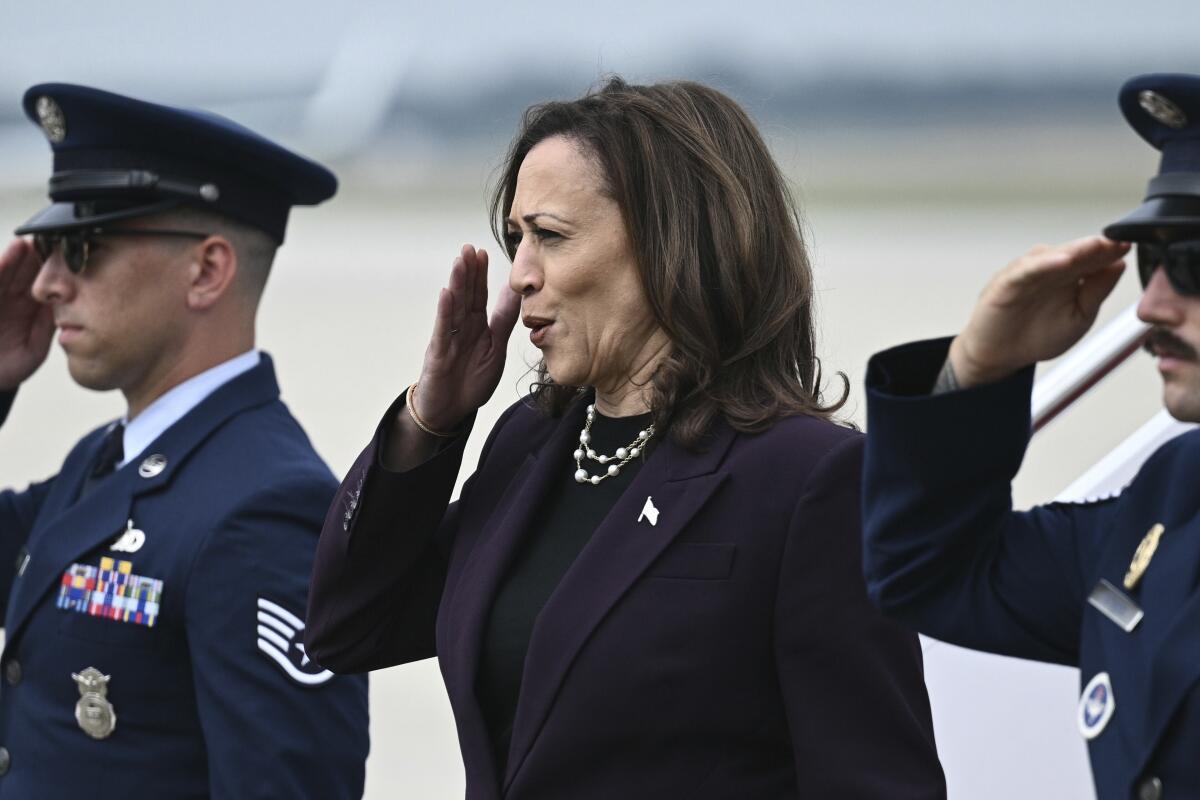
Biden, before agreeing to step aside and endorsing Harris on July 21, said repeatedly that he was in the best position to beat Trump. Other Democrats who urged him out of the race called for an open nominating process before agreeing in the immediate aftermath to coalesce around Harris to avoid a messy fight.
But nearly 4 in 5 Democrats said they wanted Harris to replace Biden in a CBS-YouGov poll conducted July 21-22. A New York Times-Siena College poll released Thursday found she was 1 percentage point behind Trump among likely voters, a 5-point improvement on Biden’s 6-point deficit in early July and within the poll’s margin of error.
“The Democrats are having to choose among a lot of bad options,” said Ron Nehring, a former chair of the California Republican Party who watched Harris’ rise. He said Democrats are merely engaged in spin by arguing that she has improved since her trip to Central America. He added that she is being thrust into a role for which she is not prepared, with little time to adjust.
“How many people in their 50s really get better?” said Nehring, who worked on Texas Republican Sen. Ted Cruz’s 2016 presidential primary campaign.
Harris has not fared well in focus groups conducted by a Republican anti-Trump organization that talks to voters on a weekly basis.
“There’s some downstream consequences to the fact that voters just haven’t been seeing enough,” said John Conway, director of strategy for Republican Voters Against Trump. “Some of that is what they do see are clips that go around the internet or clips on Fox News.”
Conway said Harris will have a chance to speak for herself, rather than as a supporting player to Biden: “Now that she’s on the top of the ticket, the spotlight’s going to be on her.”
More to Read
Get the L.A. Times Politics newsletter
Deeply reported insights into legislation, politics and policy from Sacramento, Washington and beyond. In your inbox twice per week.
You may occasionally receive promotional content from the Los Angeles Times.



